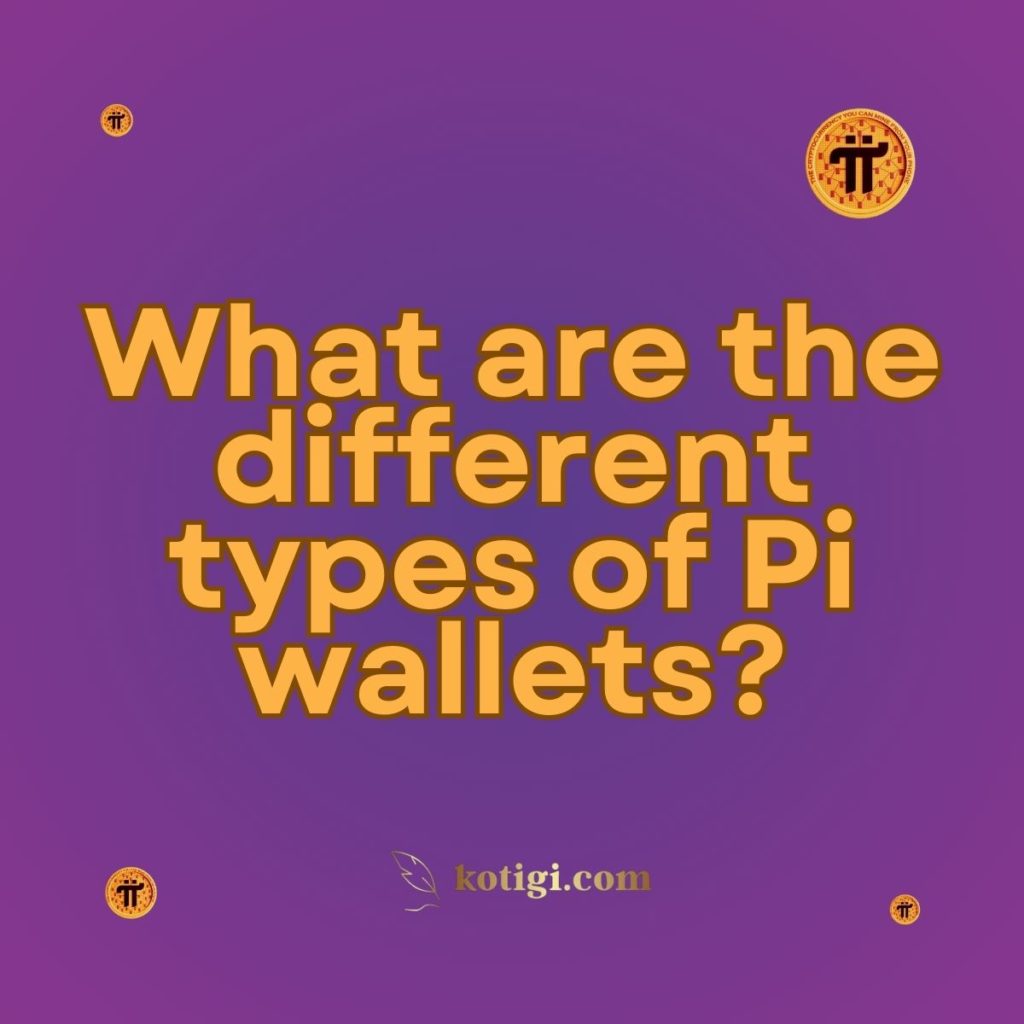
What are the different types of Pi wallets?
There are four main types of Pi wallets: mobile wallets, web wallets, hardware wallets, and paper wallets. Each type offers unique features and security levels, allowing users to choose the best option for managing their Pi tokens based on their needs and preferences.
Wallet App is not available on PiNet yet. You must use the Pi browser.
Introduction
As the popularity of cryptocurrencies continues to rise, the importance of digital wallets in securely managing and transacting digital assets cannot be overstated. For users of the Pi Network, understanding the different types of Pi wallets available is crucial for effectively handling their Pi tokens. Each type of wallet offers unique features, advantages, and levels of security, catering to the diverse needs of users. In this blog post, we will explore the various types of Pi wallets, how they function, and the benefits they offer, enabling users to make informed decisions about managing their Pi tokens.
Excepting the official PiNet Wallet that is accessible on the Pi Browser, these types of wallets most the most used ones for other cryptos and would probably be used for Pi in the future after OPEN Mainnet.
1. Mobile Wallets
1.1 Definition and Functionality
Mobile wallets are applications that can be downloaded on smartphones or tablets, allowing users to manage their Pi tokens conveniently on the go. These wallets offer a user-friendly interface, making it easy to send, receive, and store Pi tokens. Mobile wallets are particularly appealing to users who prefer quick access to their cryptocurrency for daily transactions.
1.2 Features
Mobile wallets typically provide features such as balance tracking, transaction history, and QR code scanning for easy transfers. They often include security measures like PIN codes, biometric authentication, and backup options to protect user funds.
1.3 Advantages
The primary advantage of mobile wallets is their convenience. Users can access their wallets anytime and anywhere, facilitating quick transactions and real-time management of their Pi tokens. Additionally, the intuitive design of mobile wallets makes them accessible to users of all experience levels, from beginners to seasoned cryptocurrency enthusiasts.
2. Web Wallets
2.1 Definition and Functionality
Web wallets are accessible through web browsers, allowing users to manage their Pi tokens from any device with internet access. These wallets are typically hosted by third-party services, providing a platform for users to store and transact their tokens.
2.2 Features
Web wallets often include features such as user-friendly interfaces, balance displays, and transaction management tools. They may also offer integrated exchange services, enabling users to trade Pi tokens for other cryptocurrencies. However, security is a critical consideration, as users must trust the hosting service to keep their funds safe.
2.3 Advantages
The primary benefit of web wallets is their accessibility. Users can access their wallets from any device, making it easy to manage tokens on the go or from multiple devices. Additionally, many web wallets provide additional functionalities, such as trading capabilities and support for various cryptocurrencies.
3. Hardware Wallets
3.1 Definition and Functionality
Hardware wallets are physical devices designed to store cryptocurrency offline, providing a high level of security for users’ assets. Unlike mobile and web wallets, which are connected to the internet, hardware wallets keep private keys stored securely in a physical format, reducing the risk of hacking and theft.
3.2 Features
Hardware wallets come equipped with features such as secure key storage, transaction verification through physical buttons, and compatibility with multiple cryptocurrencies. They often include backup options and recovery phrases to help users restore access if the device is lost.
3.3 Advantages
The main advantage of hardware wallets is their superior security. By keeping private keys offline, they protect users from online threats, making them an ideal choice for individuals holding significant amounts of Pi tokens or other cryptocurrencies. Although they require an initial investment, the peace of mind that comes with enhanced security is invaluable for many users.
4. Paper Wallets
4.1 Definition and Functionality
Paper wallets are a form of cold storage that involves printing out the user’s private and public keys on paper. This method allows users to keep their cryptocurrency completely offline, protecting it from digital threats.
4.2 Features
Creating a paper wallet typically involves generating keys through a secure platform and printing them out. The wallet contains the public key, which can be shared for receiving funds, and the private key, which must be kept secure to access and spend the tokens.
4.3 Advantages
The primary advantage of paper wallets is their complete detachment from the internet, making them immune to hacking and other online threats. They are a cost-effective solution for long-term storage of Pi tokens, especially for users who do not require immediate access to their assets.
5. Choosing the Right Pi Wallet
5.1 Assessing User Needs
When selecting a Pi wallet, users should assess their individual needs and preferences. Consider factors such as the frequency of transactions, the amount of Pi tokens being held, and the desired level of security.
5.2 Balancing Security and Convenience
Users must find a balance between security and convenience. For those who frequently transact, a mobile or web wallet may be ideal. Conversely, users holding larger amounts of Pi tokens for the long term may prefer the enhanced security of a hardware or paper wallet.
5.3 Staying Informed
It’s essential to stay informed about developments within the Pi Network and the cryptocurrency landscape as a whole. New wallet features, updates, and security measures can influence the choice of wallet. Engaging with the community and seeking feedback can provide valuable insights.
Conclusion
Understanding the different types of Pi wallets is crucial for effective management of Pi tokens. From mobile and web wallets offering convenience to hardware and paper wallets providing superior security, each type has its unique features and advantages. By evaluating individual needs and preferences, users can make informed decisions about which wallet best suits their requirements, ensuring they manage their Pi tokens securely and efficiently within the Pi Network.
Key Takeaways
| Key Factors | Description |
|---|---|
| Mobile Wallets | User-friendly apps for managing Pi tokens on the go. |
| Web Wallets | Accessible through browsers, offering flexibility but requiring trust in third-party services. |
| Hardware Wallets | Physical devices providing high security for offline storage of Pi tokens. |
| Paper Wallets | Cold storage solution that involves printing private and public keys, immune to online threats. |
| Choosing the Right Wallet | Assess individual needs, balancing security with convenience to select the best option. |





